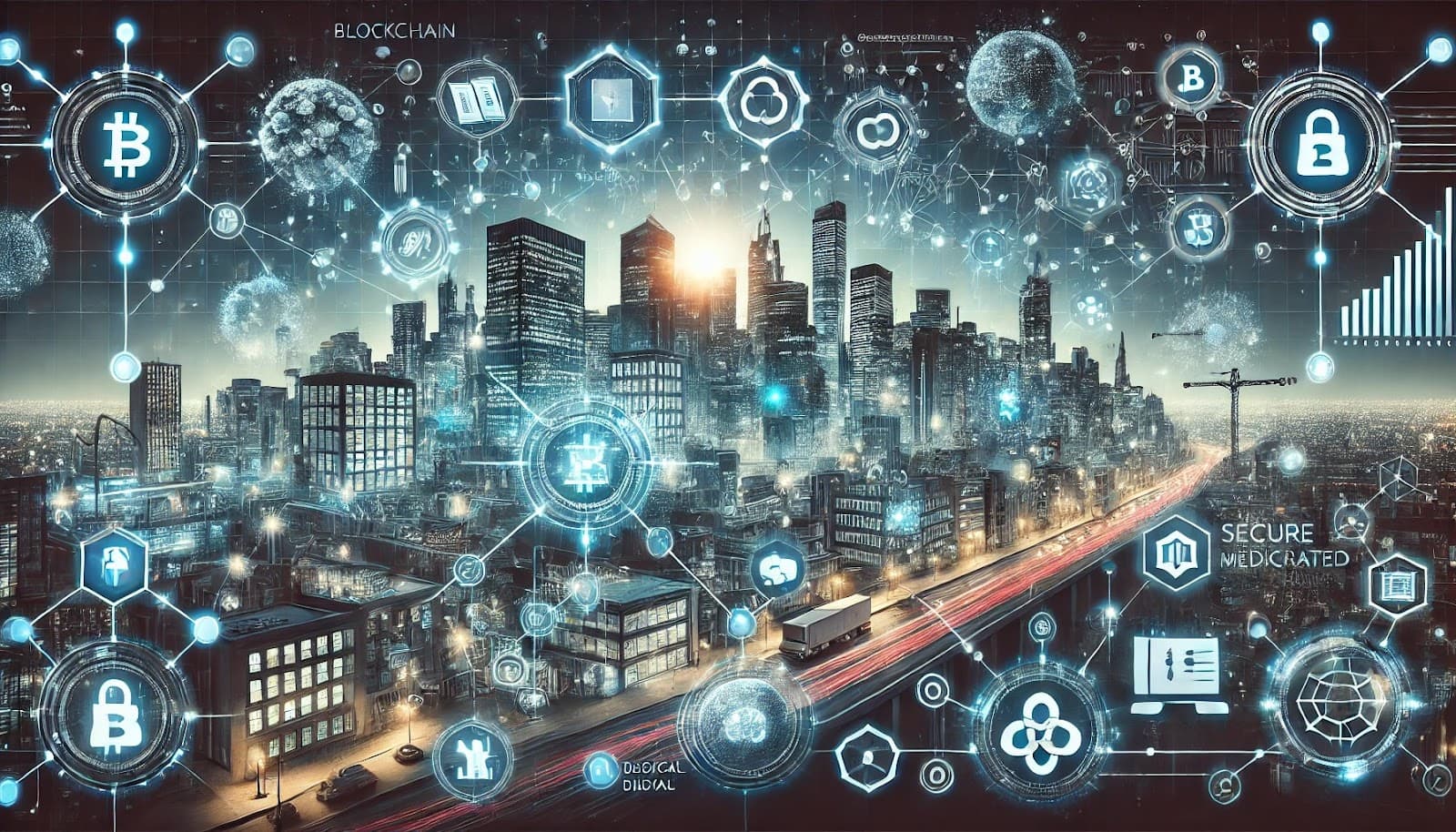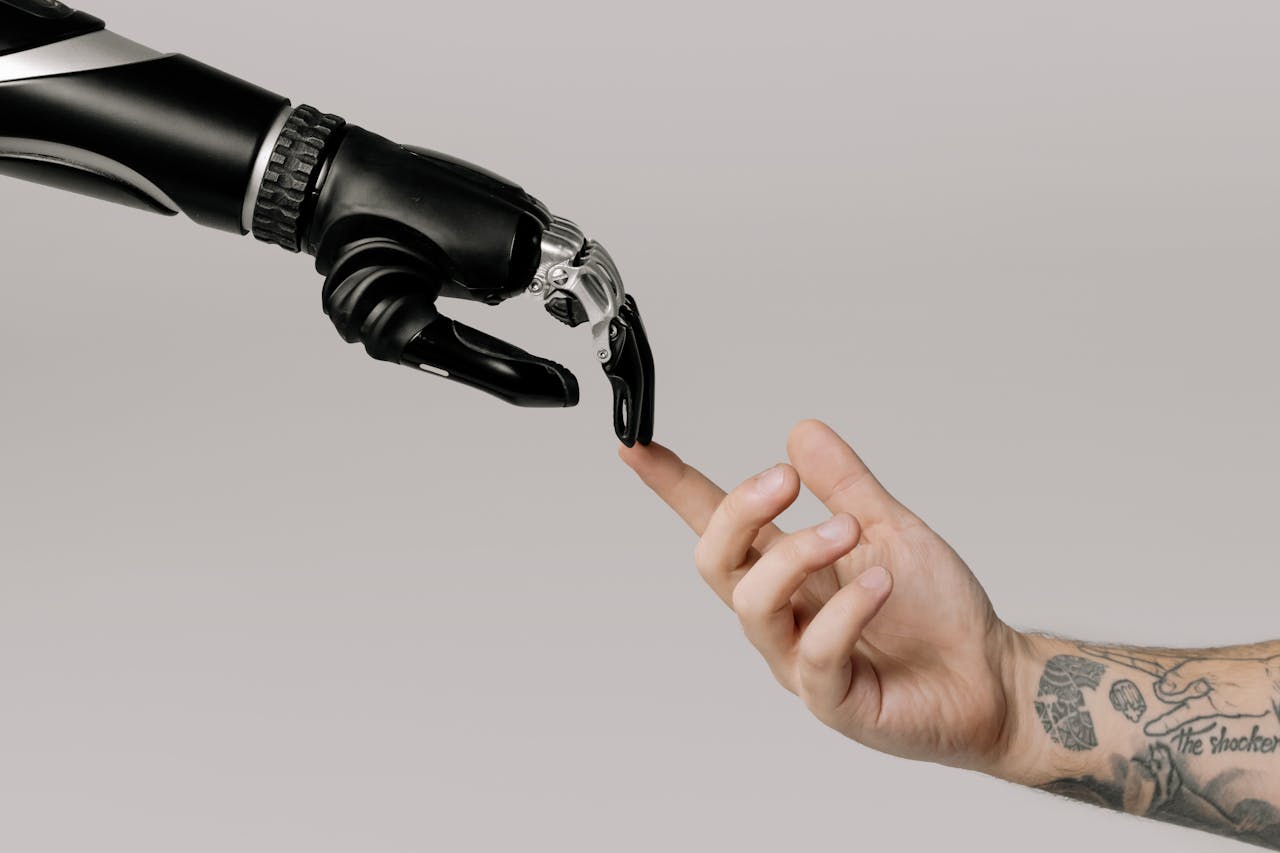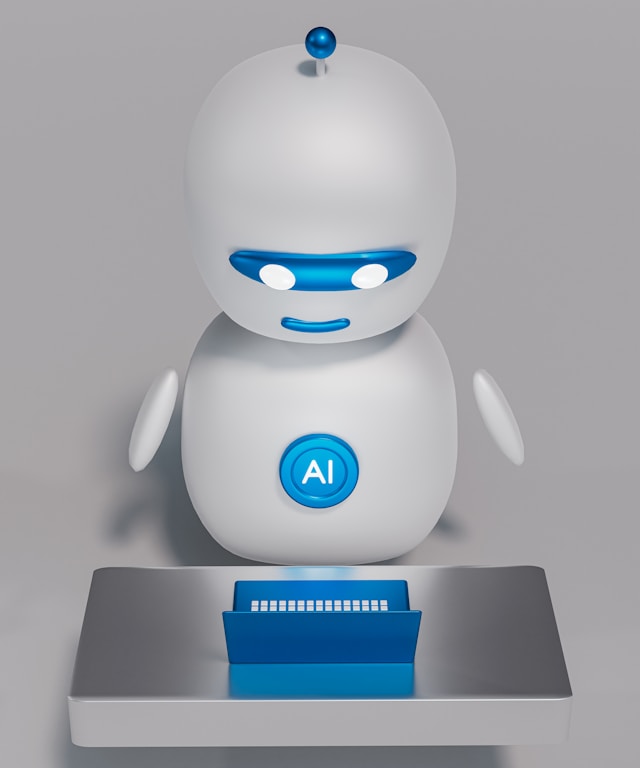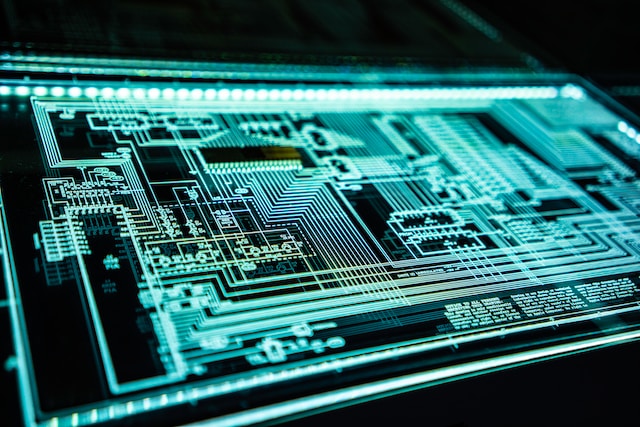High technology, commonly referred to as high tech, has undergone a remarkable transformation since its inception. The term itself emerged in the post-war era, encapsulating advancements that were significantly ahead of their time in terms of innovation and application. The evolution of high tech can be traced through several key periods:
- The Advent of Computing: Post-World War II marked the beginning of modern computing. Innovations such as the transistor in 1947, and later the integrated circuit, paved the way for the development of personal computers and the subsequent information age.
- The Internet Revolution: The late 20th century witnessed the birth of the World Wide Web, which revolutionized communication, commerce, and information sharing, connecting the globe in an unprecedented way.
- The Mobile Wave: The turn of the millennium saw the rise of mobile technology, with smartphones becoming ubiquitous, transforming not just communication but also our consumption of media and our interaction with the digital world.
- The Data Era: The explosion of data generated by mobile devices, IoT (Internet of Things), and online activities has ushered in an era where big data analytics and cloud computing are vital for extracting insights and value.
Each leap in high tech has profoundly impacted society, driving economic growth, creating new industries, and reshaping our social and cultural landscapes. Today, high tech influences virtually every aspect of our lives, from how we work and learn to how we manage our health and connect with others.
The Role of Artificial Intelligence
Artificial Intelligence (AI) is not just a component of the high tech landscape; it is increasingly becoming the driving force behind it. AI’s capabilities are shaping industries in several significant ways:
- Automation and Efficiency: In manufacturing, AI-driven robots and systems are enhancing productivity and precision, reducing the need for human intervention in repetitive tasks.
- Personalization and User Experience: In the consumer space, AI is enabling more personalized experiences through recommendation algorithms and tailored content.
- Healthcare Innovation: AI is revolutionizing healthcare by improving diagnostic accuracy, personalizing treatment plans, and managing patient data more effectively.
- Financial Services: The finance sector is leveraging AI for risk assessment, fraud detection, and algorithmic trading, offering more sophisticated and secure services.
As AI technology advances, we can anticipate even more profound changes:
- AI and IoT Integration: The convergence of AI with IoT promises smarter homes, cities, and industries, with devices that can communicate and make autonomous decisions.
- Advancements in Machine Learning: Machine learning algorithms will become more adept at learning from data, leading to AI that can solve more complex problems and adapt to new situations without human guidance.
- Ethical AI: There will be an increased focus on developing ethical AI systems that make fair and unbiased decisions, respecting privacy and ensuring transparency in their operations.
The future advancements of AI are poised to redefine the very fabric of society, offering solutions to some of the most pressing challenges while also presenting new ethical and practical considerations that must be addressed.
Quantum Computing Breakthroughs
Quantum computing represents a monumental leap forward in our ability to process information. This technology harnesses the peculiar properties of quantum mechanics, such as superposition and entanglement, to perform calculations at speeds unattainable by classical computers. The potential applications are vast and transformative:
- Cryptography: Quantum computers could break current encryption methods, necessitating the development of quantum-resistant cryptography to secure data.
- Drug Development: By accurately simulating molecular interactions, quantum computing could accelerate the creation of new pharmaceuticals and treatments.
- Climate Modeling: Enhanced computational abilities will enable more precise predictions of climate change patterns, aiding in the development of mitigation strategies.
- Optimization Problems: Logistics, supply chains, and traffic flow can be optimized more efficiently, saving time and resources.
The race to achieve quantum supremacy is on, with both private and public sectors investing heavily. While fully operational quantum computers are not yet a reality, recent breakthroughs suggest that practical quantum computing could arrive sooner than previously anticipated. The challenge lies in maintaining the delicate state of qubits, quantum computing’s basic units of information, and scaling up the systems to handle complex tasks. What’s clear is that quantum computing has the potential to revolutionize data processing, opening up new frontiers in technology and science.
The Expansion of the Internet of Things (IoT)
The Internet of Things (IoT) is rapidly becoming an integral part of our daily lives, with a network of connected devices that communicate and interact with each other and with us. This interconnectedness offers convenience and efficiency, and its expansion is set to have profound implications:
- Smart Homes: Thermostats, lights, and appliances that adjust automatically to our preferences and behaviors, enhancing comfort and energy efficiency.
- Wearable Technology: Devices that monitor health metrics in real-time, offering insights into our well-being and alerting us to potential health issues.
- Smart Cities: Urban environments equipped with sensors to manage traffic, waste, and energy use, improving sustainability and quality of life.
- Industrial IoT (IIoT): Factories and supply chains employing IoT for predictive maintenance and inventory management, boosting productivity and reducing downtime.
As IoT devices proliferate, they generate vast amounts of data, which, when analyzed, can lead to smarter decision-making and innovation. However, this expansion also raises concerns about security and privacy, as more devices mean more potential vulnerabilities. Addressing these challenges is critical to ensure the safe and beneficial growth of IoT technologies. The future will likely see even more sophisticated IoT ecosystems, with artificial intelligence playing a key role in making these systems more autonomous and responsive to our needs.
Advancements in Biotechnology
The realm of biotechnology is experiencing a surge of groundbreaking innovations that promise to redefine healthcare and environmental management. At the forefront of these advancements are gene editing and personalized medicine, two areas that exemplify the potential of biotech to tailor treatments and interventions to individual needs.
- Gene Editing Technologies: CRISPR-Cas9 has emerged as a revolutionary tool for making precise alterations to DNA. This technology enables scientists to modify genetic material with unprecedented accuracy, opening the door to potential cures for genetic disorders and advancements in agricultural biotechnology.
- Personalized Medicine: Leveraging genetic information, personalized medicine is shifting the paradigm from a one-size-fits-all approach to bespoke treatment plans. This individualized strategy enhances the efficacy of treatments for a wide range of conditions, including cancer, by considering each person’s unique genetic makeup.
- Synthetic Biology: The design and construction of new biological parts and systems, or the re-design of existing ones, for useful purposes, is another exciting area. It holds promise for producing new biofuels, cleaning up pollutants, and even creating artificial life forms.
These biotechnological innovations are not without their ethical and practical challenges. The implications of gene editing, for example, raise questions about the potential for unintended consequences and the moral considerations of altering human genetics. Nevertheless, the trajectory of biotech suggests a future where diseases could be preemptively corrected, and personalized treatments become the norm, vastly improving the quality of life and longevity.
The Future of Renewable Energy Technologies
The development of renewable energy technologies is a critical component in the global effort to combat climate change and move towards a more sustainable future. Innovations in this sector are rapidly changing the way we generate and consume energy, with significant implications for the environment and the economy.
- Solar Power Advancements: Solar cell technology is becoming more efficient and cost-effective, with new materials like perovskites offering the potential for higher energy conversion rates. Innovations in solar panel design are also making it easier to integrate them into buildings and vehicles.
- Wind Energy Progress: Wind turbines are growing larger and more powerful, capable of generating significant amounts of electricity even in areas with lower wind speeds. Offshore wind farms are expanding, harnessing the consistent breezes at sea to provide reliable power.
- Energy Storage Solutions: As the intermittency of renewable sources remains a challenge, advancements in battery technology and other energy storage methods are crucial. Innovations like solid-state batteries and flow batteries are promising more efficient and longer-lasting storage options.
- Smart Grids: The modernization of the electrical grid to accommodate renewable sources involves the development of smart grids. These grids use AI and IoT technology to balance supply and demand, integrate distributed energy resources, and improve the resilience and efficiency of power delivery.
The shift to renewable energy is not just about reducing carbon emissions; it also represents an opportunity for economic growth and job creation in the green tech sector. While there are still obstacles to overcome, such as the need for better infrastructure and the economic impact on fossil fuel industries, the trend towards cleaner energy solutions is clear. The future of high tech in the energy sector holds the promise of a more sustainable and prosperous world for all.
Space Exploration and Industry
The frontiers of space exploration are expanding rapidly, with private companies now playing a pivotal role alongside traditional governmental agencies. This new era is marked by ambitious projects and collaborations that aim to extend humanity’s reach beyond Earth:
- Commercial Space Travel: Companies like SpaceX and Blue Origin are pioneering commercial spaceflight, reducing costs and increasing accessibility to space travel.
- Space Colonization: Plans for establishing human settlements on the Moon and Mars are progressing, with projects exploring the viability of long-term habitation and the utilization of local resources.
- Asteroid Mining: The potential to mine asteroids for valuable materials could transform the materials economy and catalyze further space ventures.
- Private and Public Partnerships: Collaborations between governments and private entities are essential for advancing space technologies and sharing the financial burden of space exploration.
The implications of these developments are profound, not only for the advancement of science and technology but also for the future of industry and commerce. As private companies innovate and drive down costs, space is becoming the next frontier for industry, with the potential to create new markets and economic opportunities. However, this new space age also raises questions about regulation, space debris management, and the equitable use of extraterrestrial resources.
The Impact of 5G and Beyond
The rollout of 5G networks is revolutionizing communication with its unprecedented speed and capacity. This next-generation wireless technology is set to have far-reaching effects:
- Enhanced Connectivity: 5G networks provide significantly faster data speeds and lower latency, enabling real-time communication and the seamless streaming of high-definition content.
- Internet of Things (IoT) Expansion: With its ability to support a vast number of connected devices, 5G is accelerating the growth of IoT, facilitating smarter and more efficient cities and industries.
- Remote Work and Education: The reliability and speed of 5G are enhancing remote work and learning experiences, making them more viable and productive.
- Autonomous Vehicles: 5G’s low latency is critical for the safe operation of autonomous vehicles, allowing for near-instantaneous communication between cars and infrastructure.
As transformative as 5G is, the future holds even more promise with the advent of 6G and beyond. While still in the research phase, these future generations of wireless technology could offer terahertz frequencies, near-zero latency, and even more reliable connections. Such advancements could enable new applications in virtual reality, augmented reality, and AI, further blurring the lines between the physical and digital worlds. The challenge will be to ensure equitable access to these technologies, preventing a deepening of the digital divide.
Cybersecurity in a High Tech World
In an age where data is akin to currency, cybersecurity has ascended as a cornerstone of the high tech world. The digital age has ushered in a plethora of conveniences, but with it comes a myriad of challenges in protecting sensitive information. Cyber threats are becoming more sophisticated, and the stakes are higher than ever as both individuals and organizations navigate this complex landscape.
The importance of cybersecurity is underscored by the following factors:
- Proliferation of Devices: With more devices connected to the internet, the attack surface for cyber threats expands.
- Sophistication of Attacks: Cybercriminals are employing advanced techniques, such as AI and machine learning, to conduct attacks that are more difficult to detect and counter.
- Economic and Social Impact: Data breaches can result in significant financial losses and erode public trust in affected institutions.
- Regulatory Compliance: Organizations must navigate a growing body of regulations aimed at protecting consumer data, such as GDPR and CCPA.
To fortify defenses against cyber threats, a multi-layered security approach is paramount, incorporating the following elements:
- Encryption: Protecting data in transit and at rest to prevent unauthorized access.
- Access Control: Ensuring that only authorized individuals have access to sensitive information.
- Regular Updates and Patches: Keeping software and systems up to date to mitigate known vulnerabilities.
- Employee Training: Educating staff about best practices and potential phishing scams or social engineering tactics.
- Incident Response Planning: Preparing for potential breaches to minimize damage and recover quickly.
The evolution of cybersecurity measures will continue to be a critical aspect of the high tech landscape as we strive to stay one step ahead of cyber threats.
The Integration of Virtual and Augmented Reality
Virtual Reality (VR) and Augmented Reality (AR) are not merely futuristic concepts; they are here and now, transforming various sectors through immersive experiences and enhanced interactions. Today, VR and AR are used in gaming, education, and training simulations, offering users a way to experience environments and scenarios that are either impractical or impossible in the real world.
The potential future applications of VR and AR are vast and diverse:
- Healthcare: Surgeons can use VR to simulate operations, while AR can provide real-time data overlays during actual procedures.
- Retail: AR apps allow customers to visualize products in their own homes before making a purchase.
- Real Estate: VR tours enable potential buyers to walk through properties remotely.
- Education: Both VR and AR can create interactive learning experiences that boost engagement and retention.
To realize the full potential of VR and AR, the following developments are essential:
- Hardware Advancements: Lighter, wireless headsets with longer battery life and higher resolution displays will enhance user experience.
- Content Creation: A broader range of high-quality VR and AR content will drive adoption.
- Integration with AI: Combining AI with VR and AR can lead to personalized experiences that adapt to user preferences and behaviors.
- 5G Connectivity: Faster network speeds will allow for more complex and detailed VR and AR experiences without latency issues.
As VR and AR technologies continue to mature, they promise to redefine the way we interact with digital content and the world around us, creating opportunities for innovation across all sectors of society.
The Rise of Autonomous Vehicles
The transportation sector is on the brink of a major transformation with the emergence of autonomous vehicles (AVs). These self-driving cars, equipped with advanced sensors and AI algorithms, are set to revolutionize the way we commute, with potential benefits including:
- Increased Safety: AVs are designed to reduce human error, which is the leading cause of traffic accidents.
- Improved Traffic Flow: With the ability to communicate with each other, AVs can optimize traffic patterns and reduce congestion.
- Enhanced Mobility: Autonomous vehicles could provide greater independence for those unable to drive, such as the elderly or disabled.
- Environmental Benefits: AVs could be more fuel-efficient, contributing to reduced emissions.
However, the path to widespread AV adoption is not without challenges:
- Regulatory Hurdles: Legislation must evolve to accommodate self-driving vehicles on public roads.
- Technological Refinement: Ensuring the reliability of AV technology in all driving conditions is crucial.
- Public Acceptance: Overcoming skepticism and building trust in autonomous systems is essential for adoption.
- Infrastructure Adaptation: Roads and cities may need modifications to fully support AV operations.
As these vehicles become more sophisticated and prevalent, they have the potential to reshape not only our daily commutes but also the entire automotive industry.
Smart Cities and Urban Planning
The integration of high tech into urban planning is leading to the development of smart cities, where technology is harnessed to create more efficient and sustainable urban environments. Key components of smart cities include:
- Intelligent Transportation Systems: Utilizing data analytics and IoT to optimize traffic flow and public transit.
- Energy Management: Implementing smart grids and renewable energy sources to reduce consumption and carbon footprint.
- Waste Reduction: Employing sensor-equipped waste bins and recycling systems to manage waste more effectively.
- Public Safety: Enhancing safety with smart surveillance systems and emergency response technologies.
The benefits of smart cities are significant:
- Quality of Life: Smart city technologies can lead to cleaner, safer, and more convenient urban living.
- Economic Growth: The adoption of smart technologies can drive innovation and attract businesses.
- Resource Efficiency: Optimizing the use of resources leads to cost savings and environmental benefits.
- Community Engagement: Digital platforms can foster greater citizen involvement in governance and city planning.
To realize the vision of smart cities, collaboration between government, industry, and citizens is crucial, as well as careful consideration of privacy and security concerns. The future of urban living is one where technology and data make cities not just smarter, but also more human-centric.
Ethical Considerations and High Tech
As we navigate the burgeoning landscape of high-tech innovation, ethical considerations become increasingly critical. The rapid pace of technological advancement presents a series of ethical dilemmas that challenge our existing frameworks and demand careful scrutiny. Key ethical issues include:
- Privacy: The collection and analysis of personal data by corporations and governments raise concerns about the right to privacy and autonomy.
- Bias and Discrimination: AI systems, if not properly designed, can perpetuate biases found in their training data, leading to unfair treatment and discrimination.
- Job Displacement: Automation and AI may lead to significant job displacement, prompting questions about the responsibility of tech companies and the role of government in supporting affected workers.
- Autonomy: As devices and systems become more autonomous, determining accountability for their actions becomes complex.
To address these concerns, stakeholders must engage in dialogue and develop guidelines that ensure ethical development and deployment of technology. This includes:
- Transparent Practices: Companies should be transparent about data usage and provide users with control over their information.
- Inclusive Design: Technologies should be designed with diverse input to mitigate bias and ensure they serve the needs of all communities.
- Ethical Standards: The tech industry should establish and adhere to ethical standards that prioritize the well-being of individuals and society.
The future of high tech must be navigated with a conscientious approach that balances innovation with ethical responsibility.
Preparing for the Workforce of the Future
The high-tech future will demand a workforce equipped with new skills and a flexible mindset. As traditional roles evolve or become obsolete, education systems and professional development programs must adapt to prepare individuals for the changing landscape. Essential skills for the future workforce include:
- Technical Proficiency: Understanding of AI, machine learning, data analytics, and cybersecurity.
- Adaptability and Lifelong Learning: Ability to continuously learn and adapt to new technologies and methodologies.
- Creativity and Innovation: Creative thinking and problem-solving skills will be invaluable as automation takes over routine tasks.
- Interpersonal Skills: Communication, collaboration, and emotional intelligence will remain crucial in a technologically driven world.
Education systems are responding by:
- Updating Curricula: Incorporating STEM education and emerging technologies into school programs.
- Promoting Soft Skills: Focusing on critical thinking, creativity, and collaboration in teaching methods.
- Partnering with Industry: Creating partnerships with tech companies to provide practical experience and insight into industry needs.
- Emphasizing Flexibility: Encouraging interdisciplinary studies and flexible learning paths to prepare students for a dynamic job market.
By proactively developing these skills, the workforce of tomorrow will be better positioned to thrive in a high-tech future, contributing to a robust and innovative economy.
Embracing the High Tech Horizon
As we reflect on the future of high tech, it is clear that this journey is not merely about technological advancements but also about how we, as a society, adapt and integrate these innovations. The progression from the advent of computing to the explosion of the IoT, the transformative power of AI, the breakthroughs in quantum computing, and the relentless pursuit of renewable energy technologies, all signal a future that is brimming with potential.
The integration of VR and AR into our daily lives, the advent of autonomous vehicles, and the development of smart cities are reshaping our reality and expanding our possibilities. Biotechnological innovations are promising to revolutionize healthcare, while advancements in space exploration are looking beyond our planet to new horizons. Meanwhile, the emergence of 5G and the anticipation of 6G are accelerating connectivity and the Internet of Things, bringing about a new era of communication and interaction.
Yet, with great power comes great responsibility. The rise of these technologies must be met with robust cybersecurity measures, ethical considerations, and a workforce prepared for the future. As we stand at the threshold of this high tech era, it is imperative that we approach these developments with a sense of responsibility and a commitment to the betterment of society. By doing so, we can harness the full potential of high tech to create a future that is not only more advanced but also more equitable, sustainable, and human-centric.
In conclusion, as we embrace the high tech horizon, let us do so with a conscious effort to balance innovation with ethical practice, to ensure that technology serves as a tool for positive change. It is through this balanced approach that society can thrive amidst the waves of high tech evolution, creating a future that reflects our highest aspirations and values.









